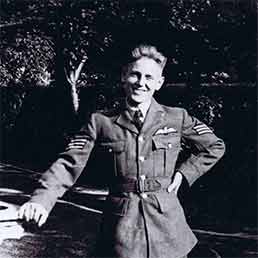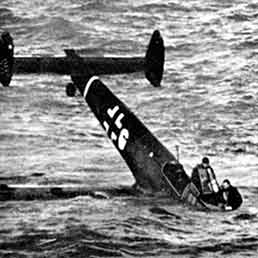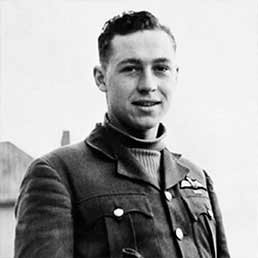Museum Grounds
When you arrive at the Kent Battle of Britain Museum you are greeted in the car park by the first of three Pickett Hamilton Retractable Forts. This example was bought from the landowner and recovered by museum volunteers from a farm at the former Lympne Airfield and lay abandoned upside down with a tree growing through it. At the end of the Museum entrance and shop are two Road Block barrels also recovered from RAF Lympne.
As you leave the Home Front Display in the former Link Trainer Building, on the right is a Queen Mary aircraft trailer carrying a full-size replica of a Spitfire Mk. IX. The Spitfire, in its 'D-Day' colour scheme, represents the former Gate Guardian Spitfire Mk. IX, Serial No. MK356, which stood at the Main Gates of RAF Hawkinge until it closed in December 1961. MK356 was eventually rebuilt and operates with the RAF Battle of Britain Memorial Flight.
On the left is the centre piece of the Museum, the full-size replicas of three Hawker Hurricanes depicting three machines flown by No.32 Squadron. No.32 Squadron operated regularly from RAF Hawkinge during July and August 1940 and were famously recorded by the Fox Photographic Unit in a series of world famous photographs taken on the airfield on 29th July 1940. The aircraft depict the machines flown by Squadron Leader John Worrall, Flying Officer Peter M. Brothers and Sergeant William B. Higgins.
A Bristol Blenheim Mk. IV can be seen on the grass between the Queen Mary Trailer and Pill Box, and was acquired by the Museum Trust in November 2017. It has been built out of the substantial remains of four Canadian built Bollingbroke's and were the left-over sections from the Aircraft Restoration Co at Duxford's brilliant rebuild to flying condition of a Bristol Blenheim Mk.I. The rebuild of our aircraft is expected to take somewhere between five and ten years to complete and is dependent on fundraising, construction of a building to house it and acquiring a few missing parts, including engines and propeller blades. All this work will be carried out by volunteers.
In the corner of the Museum site is a Type 22 Pill Box, in its original position, which would have offered a defensive position when the airfield was under attack, with an anti-aircraft mount on the roof and windows offering full vision of the landing strip. At Hawkinge on 6th September 1940 the situation being so critical with an expected invasion everyone, including cooks and clerks, was issued with a rifle and five rounds of ammunition, and told to make every shot count as there was no more ammunition available.
A 1940 'Dig for Victory' garden, with its own Anderson Shelter is behind the 'Operation Block'. This is maintained by volunteers, with all the original types of fruit and vegetables grown during World War Two. The produce is sold each season and the proceeds pays for the following years seeds.
In front of the 1927 'Operation Block' is another example of a Pickett Hamilton Retractable Fort. This example, together with the example between the V1 and V2 Display Nissen Hut and Armoury Building, were recovered by a team of Museum volunteers from RAF Hawkinge in the mid 1990's. This example being excavated from ground adjacent to where the Lidl's Superstore now stands and it still retains its original compressed air ram and equipment. A model, made by the designer to show how his idea would work, can be seen facing you as you enter the Lord Dowding Memorial Hangar.
Adjacent to the Pickett Hamilton Fort is an original RAF Hawkinge Lamp Post salvaged from Aerodrome Road in the early 1980's.
The Hawkinge Airfield Memorial, placed in front of the Operations Block, was erected at the Museum in July 2015 in the presence of four of 'The Few' by the Airfields of Britain Conservation Trust. It commemorates the airfield's military use between 1915 – 1961. In actual fact the first known civilian flight from Hawkinge, in a 'plane called 'The Mayfly' was in early 1910.
Adjacent to the 1926 Armoury Building are items salvaged by the Museum in the early 1980's from the Refuelling and Fuel Dump area of the Airfield, approximately 100 yards to the west of the Museum. Items include the paraffin store, fuel pumps, bowser fuel pumps, manhole covers and fuel dump vents.
Alongside the Armoury are various concrete items. They range from circular Aircraft Tie Downs (to secure aircraft in high winds), Boundary Marker Stones, Foundation Blocks (from the Guard Room and Boiler Block), and a coping stone from the perimeter wall to the Administration area. These have all been salvaged from around Hawkinge Airfield since we moved to the site in 1980.




